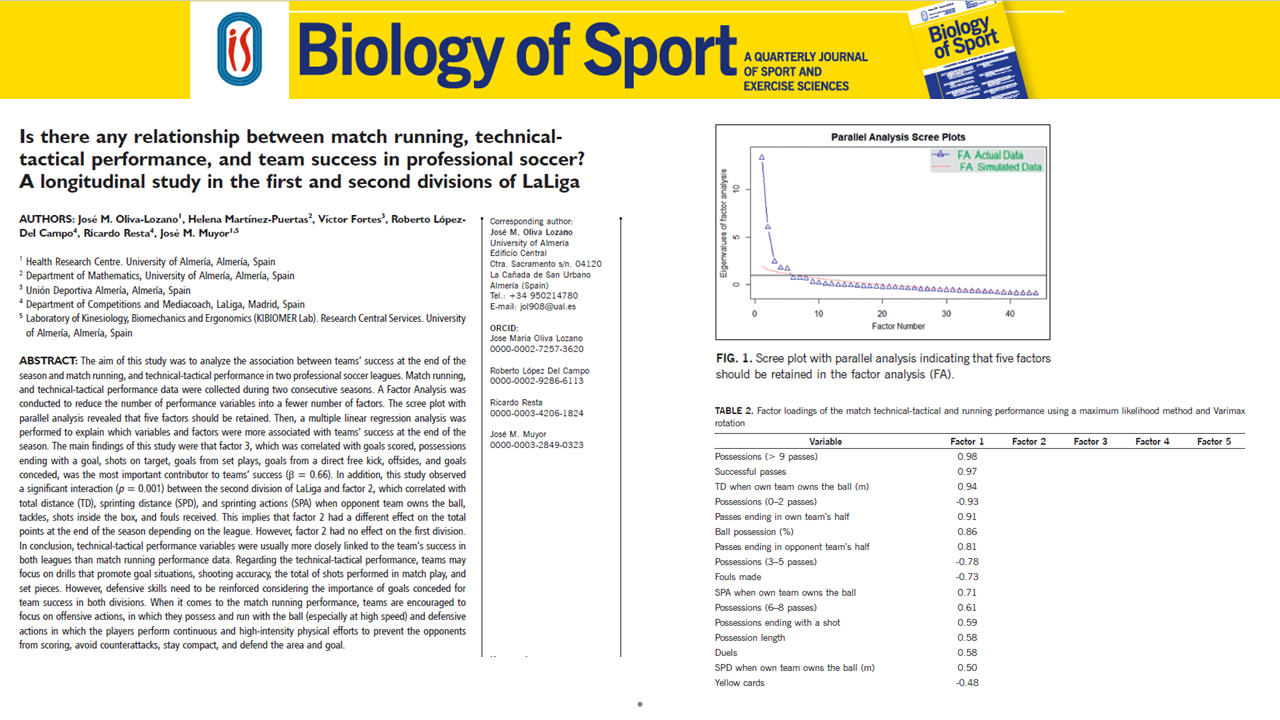
06 Sep Is there any relationship between match running, technical-tactical performance, and team success in professional soccer? A longitudinal study in the first and second divisions of LaLiga
Posted at 13:43h
in Paper
What truly drives team success: running harder or playing smarter? This study examined two full seasons of LaLiga (First and Second Divisions), analyzing thousands of match events and physical metrics to identify which performance indicators are most strongly linked to end-of-season points.
Key insights for coaches and performance staff:
- Goals and efficiency win matches: The factor most associated with success included goals scored, shots on target, set-piece efficiency, and fewer goals conceded. In simple terms—scoring more and conceding less is the strongest driver of points.
- Running helps, but with context: In LaLiga Smartbank (Second Division), success was also linked to high-intensity defensive work without the ball—covering distance and sprinting when the opponent had possession, while reducing unnecessary fouls and tackles. In the First Division, these running factors had no significant effect.
- Technical-tactical variables dominate: Across both leagues, metrics related to creating and converting goal chances outweighed physical running distances in explaining team success.
- League differences matter: Physical output carried more weight in the Second Division, while tactical efficiency was the main driver in the First Division.
Practical applications:
- Focus training on shot accuracy, set pieces, and chance creation—these are the strongest predictors of team points.
- Defensive organization must aim at reducing goals conceded through compactness, anticipation, and limiting opponent shots.
- Conditioning drills should combine technical and tactical demands, ensuring high-speed running is integrated into realistic game contexts.
- In lower leagues, where running has more impact, coaches should emphasize high-intensity defensive efforts and transitions.
Read the full paper here (DOI): https://doi.org/10.5114/biolsport.2023.118021


